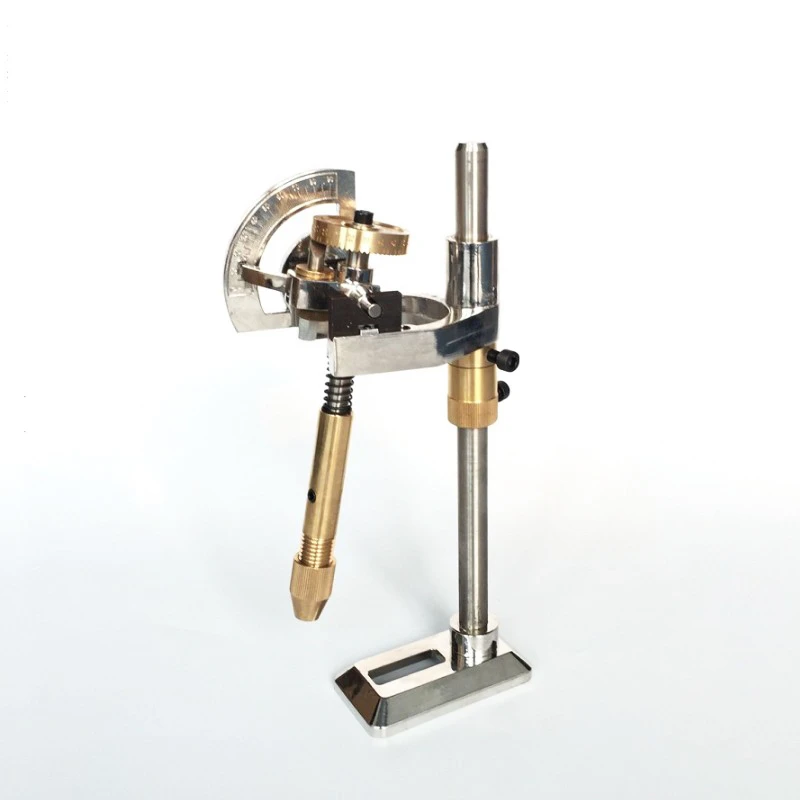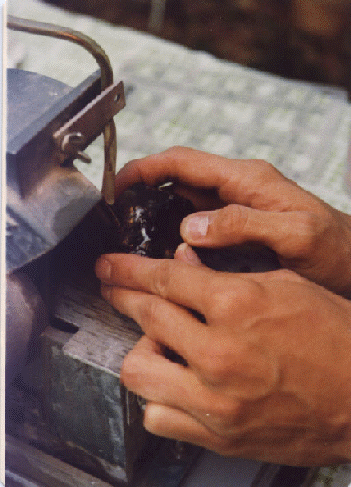- Gemstone Polishing Tools
- Polishing Gemstones At Home
- Gemstone Polishing Compound
- Gemstone Polishing Kit
- Gemstone Polishing Wheel
- Gemstone Polishing Tools
- Polishing Gemstones With Dremel
Not required for EPS2 students
The process of cutting and polishing gems is called gemcuttingor lapidary, while a personwho cuts and polishes gems is called a gemcutter ora lapidary (sometimes lapidarist).
Gemstone material that has not been extensively cut and polishedis referred to generally as rough. Rough materialthat has been lightly hammered to knock off brittle, fracturedmaterial is said to have been cobbed.
People also search for. Master Wholesale stocks a large selection of the best stone and granite grinding and polishing tools for industry leaders; Alpha Tools, Flex, Makita, Metabo, Blaster, and Barranca.

All gems are cut and polished by progressive abrasion using finerand finer grits of harder substances. Diamond, the hardest naturallyoccurring substance, has a Mohs hardness of 10 and is used asan abrasive to cut and polish a wide variety of materials, includingdiamond itself. Silicon carbide, a manmade compound of siliconand carbon with a Mohs hardness of 9.5, is also widely used forcutting softer gemstones. Other compounds, such as cerium oxide,tin oxide, chromium oxide, and aluminum oxide, are frequentlyused in polishing gemstones.
Lapidary Techniques
Several common techniques are used in lapidary work:
Using the techniques listed above, gemstones are typically fashioned into one of several familiar forms:Sawing
In most gem sawing, a thin circular blade usually composed ofsteel, copper, or a phosphor bronze alloy impregnated along theouter edge with diamond grit and rotating at several thousandsurface feet per minute literally scratches its way through agemstone. A liquid such as oil or water is used to wash away cuttingdebris and keep the stone and the sawblade from overheating, whichcould cause damage to both the stone and the sawblade.
Several sizes of circular rock saws are frequently used by mostgemcutters:
- A slab saw, typically 16 to 24 inches indiameter, is used to cut stones of several inches thickness intorelatively thin slabs (often 1/8 to 3/8 inch thick).
- A trim saw, typically 6 to 10 inches in diameter,is used to cut smaller stones into thin slabs or to cut smallsections out of slabs.
- A faceter's trim saw, typically 4 inchesin diameter, is used with a very thin blade, to saw small piecesof expensive rough.
There are also jigsaws that employ either a reciprocating wire or a continuousthin metal band. These are useful for cutting curved lines that are impossiblewith circular saws. They are also useful in minimizing waste on extremelyvaluable rough material.

Grinding
Gemstone Polishing Tools
Grinding, usually with silicon carbide wheelsor diamond-impregnated wheels, is used to shape gemstones to adesired rough form, called a preform. As withsawing, a coolant/lubricant (water or oil) is used to remove debrisand prevent overheating. Very coarse diamond or silicon carbide,such as 60 grit, or mesh, (400 micron particles) or 100 grit (150micron particles) is used for rapid removal of stone, and finerabrasive (600 grit - 30 micron, or 1200 grit - 15 micron) is usedfor final shaping and sanding.
Sanding
Polishing Gemstones At Home
Sanding is similar to grindingbut uses finer abrasives. Its purpose is to remove deep scratches leftby coarser abrasives during grinding. Since it removes materialless rapidly, it also allows more delicate control over finalshaping of the stone prior to polishing. For stones with roundedsurfaces, a flexible surface such as a belt sander is often usedto avoid creating flat areas and promote smooth curves.
Lapping
Lapping is very similar to grinding andsanding, except that it is performed on one side of a rotating or vibrating flat diskknown as a lap, and it is used especiallyto create flat surfaces on a stone (as in faceting). Laps are often made of castiron, steel, or a copper-bronze alloy, but other materials can also be used.
Gemstone Polishing Compound

Polishing
After a gemstone is sawed and ground to the desired shape andsanded to remove rough marks left by coarser grits, it is usuallypolished to a mirror-like finish to aid lightreflection from the surface of the stone (or refraction throughthe stone, in the case of transparent materials). Very fine gradesof diamond (50,000 to 100,000 mesh) can be used to polish a widevariety of materials, but other polishing agents work well inmany instances. Usually, these polishing agents are metal oxidessuch as aluminum oxide (alumina), cerium oxide, tin oxide, chromiumoxide, ferric oxide (jeweler's rouge), or silicon dioxide (tripoli).Different stones are often very inconsistent in their ease ofpolishing, particularly in the case of faceted stones, so gemcuttersare often very inventive in trying new combinations of polishingagents and polishing surfaces -- often tin, tin-lead, lead, leather,felt, pellon, wood, or lucite laps for flat surfaces such as facets.Rounded surfaces, such as on cabochons, are often polished onfelt, leather, cork, cloth, or wood. Polishing removes small quantitiesof stone and can be used, especially when faceting small stones,to do ultrafine shaping of the stone.
Drilling
When a gemcutter desires a hole in or through a gemstone (e.g.,a bead), a small rotating rod or tube with a diamond tip, or aslurry of silicon carbide and coolant, is used to drillthrough the stone. Ultrasonic, or vibrating, drills arealso very effective, but they tend to be costly and thus reservedfor high-volume commercial drilling.
Tumbling
Large quantities of roughly shaped stones are often tumbled, i.e.,turned at a slow speed in a rotating barrel with abrasives andwater for extended periods (days or weeks). By tumbling with progressivelyfiner grades of abrasive (usually silicon carbide) and washingcarefully between grades, the stones are gradually smoothed andpolished to serendipitous but often very attractive shapes. Tumblingbarrels are often hexagonal in outline in order to enhance thestirring action of barrel rotation. An alternative to rotatorytumblers is a vibratory machine, often called a vibratory tumbler,in which the containing barrel vibrates rather than rotates. Themore stationary arrangement of vibratory machines makes it mucheasier to examine the progress of the stones inside, whereas standardtumblers must be halted in order to check progress. In additionto polishing gemstones, tumbling is often used to polish largequantities of metal jewelry.
Cabochons
One of the simplest lapidary forms is the cabochon, a stone thatis smoothly rounded and polished on top, relatively flattish,and either flat or slightly rounded on the bottom (which may beeither polished or sanded). This form of cutting is often usedfor opaque or translucent stones, but is also frequently usedfor transparent materials that contain too many inclusions toyield a good faceted stone. Coloration and patterning providethe major interest in such stones. Cabochon cutting, or cabbing,is often performed by simply holding the stone in the fingers,but it is more commonly done by dopping (attaching with adhesivewax or glue) the stone to a wooden or metal dopstick. This facilitatestwirling the stone to form smooth curves and avoid flat areasduring grinding, sanding, and polishing. A typical cabbing machineholds several wheels representing a progressive series of diamondor silicon carbide grit, turned by a common arbor and motor, anda water supply that provides a coolant/lubricant to wash awaydebris and keep the stone from overheating as it is ground andsanded on progressively finer wheels.
Faceted Stones
Faceting is most often done on transparent stones. Flat facetsare cut and polished over the entire surface of the stone, usuallyin a highly symmetrical pattern. The stone is dopped (usuallywith adhesive wax, epoxy, or cyanoacrylate glue) on a metal dopstick,which is then inserted in a handpiece that allows precise controlof positioning. The cutting angle is adjusted vertically via aprotractor and rotationally via an index gear. Thefacets are then ground, sanded, and polished on a rotating lap,while water or another liquid acts as a coolant and lubricant.When one side (top or bottom) of the stone is finished, a jigis used to transfer to the stone to a dopstick on the opposingside.
A faceting machine usually employs a motor that turns a lap,a water supply, an adjustable handpiece with index gearsand a protractor, and an adjustable mast or platform to hold thehandpiece assembly. Most commercially available gemcutting machinesemploy a mast, but a few employ a platform.
In recent years, innovative faceters have employed techniquessuch as concave facets, grooves, and combinations of facetingand cabbing to produce new forms in faceted stones.
Beads and Spheres

Gemstone Polishing Kit
Spheres are initially sawed into cubes or dodecahedrons and thenground to shape between two pipes or rotating concave cutters,allowing the stone to rotate freely in any direction to form aperfect spherical shape. As with other lapidary processes, graduallyfiner grades of abrasive are used to grind, sand, and polish thestone. While beads may be faceted, they are more commonly cutand polished as small spheres and then drilledto allow stringing. Bead mills are used to grind and sandlarge quantities of beads simultaneously. They typically employa grooved lap and a flat lap between which the beads are rolled and worn to shape. Aftershaping and sanding, beads are usually polished by tumbling .
Inlays
Gemstone Polishing Wheel
In an inlay, a gemstone is cut to fit and glued into a hollowrecess in another material (metal, wood, or other stones) andthen the top ground and polished flush with the surrounding material.Stones most commonly used for inlay are strongly colored opaquestones such as black onyx, lapis lazuli, turquoise, tigereye,etc.
Intarsias and Mosaics
In both intarsia and mosaic work, small bits of different coloredstones are fit together and the top cut and polished to presenta picture or other interesting pattern. Strictly speaking, a mosaicis constructed on top of a flat base of another material (usuallystone), while an intarsia (also known as Florentine mosaic, orpietre dure) is set flush into the surface of the base material.The finest intarsias and mosaics were traditionally of Italianorigin, but intarsia has enjoyed something of a renaissance inrecent years with the fine work of artists such as Jim Kaufmannand Nicolai Medvedev.
Cameos and Intaglios
Cameos and intaglios are similar in that both usually are carvedportraits in stone or seashells. They differ in that cameos areraised portraits, while intaglios are carved down into the surfaceof the material. Both typically take advantage of different coloredlayers of material. The finest cameos and intaglios have traditionallycome from Italy (usually shell) or Germany (usually agate).
Sculpture
Gemstone Polishing Tools
Gemstones can be carved, like other materials, into almost anyform, limited only by the talents of the sculptor. Carving isaccomplished with a variety of diamond-impregnated steel bits,saws, and grindstones.
Note: the information in this html page has been downloaded withpermission from John Miller'sexcellent gems site.